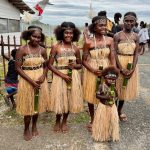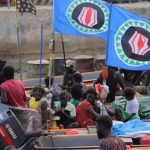Jokhang Temple is the most important temple in Tibet and the spiritual heart of Lhasa. There is a Tibetan saying that goes, ‘Jokhang Temple came first, then Lhasa City‘, a testament to how the temple laid the foundation for the city’s growth.
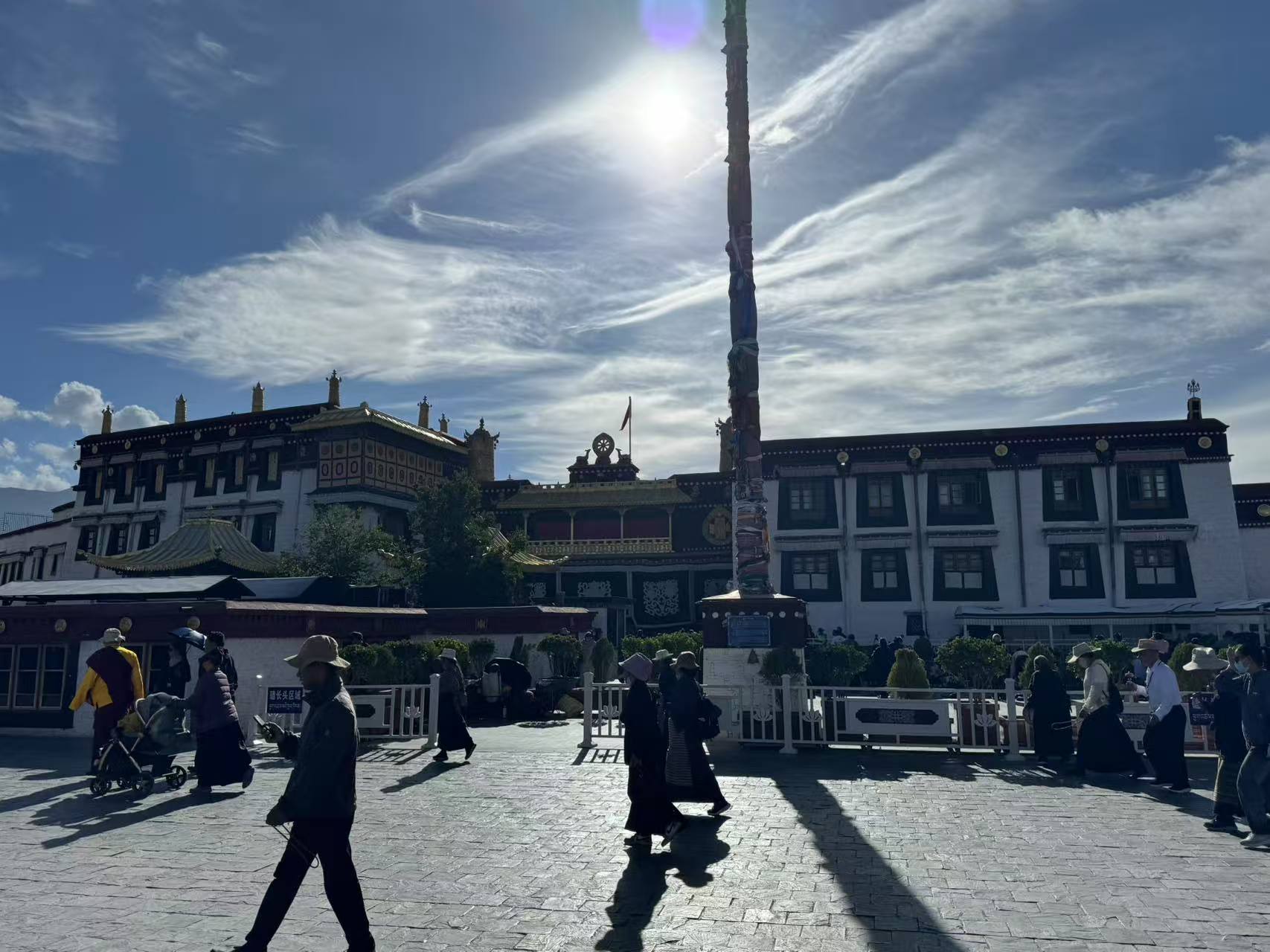
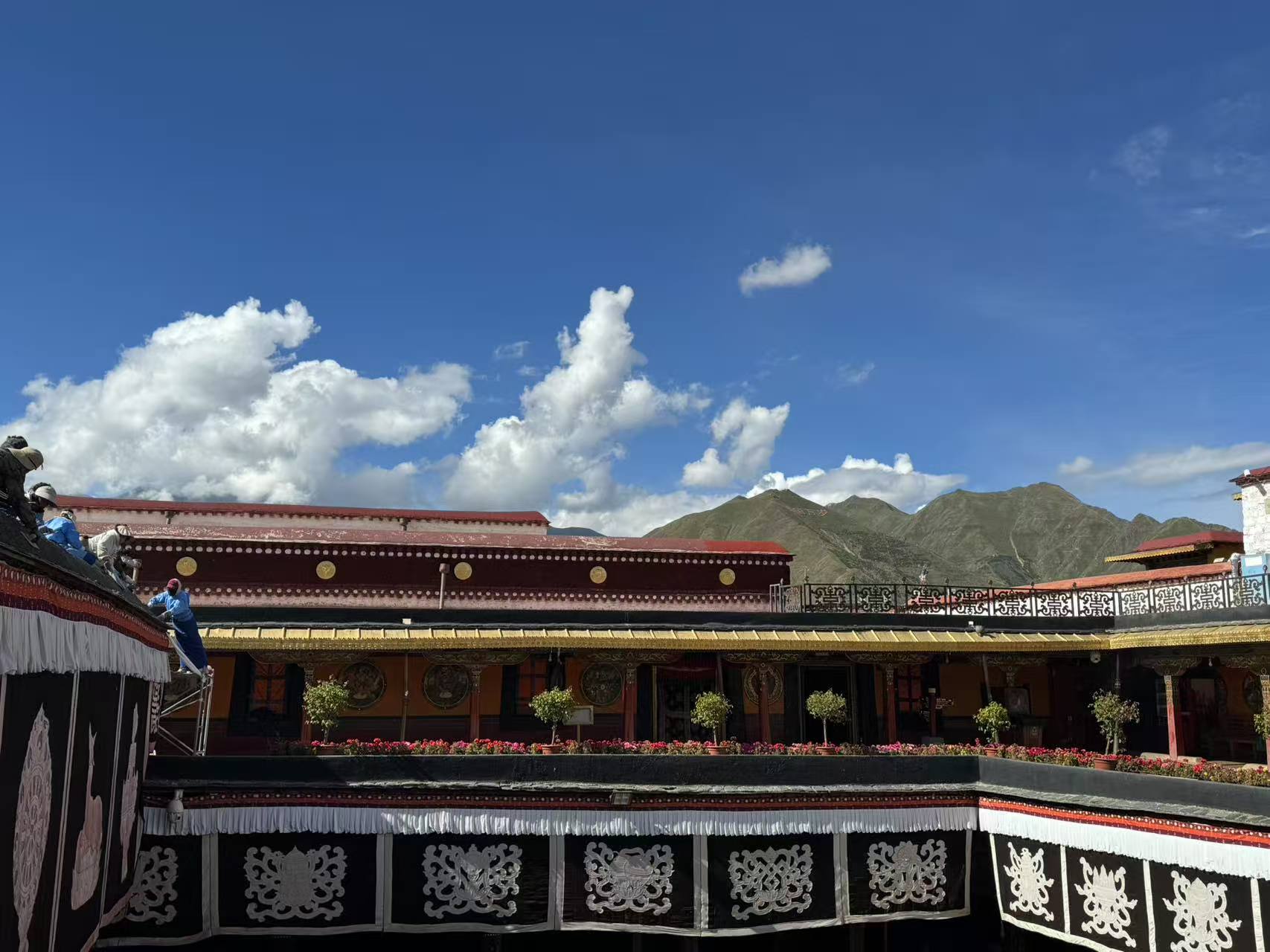
Table of Contents
The History of Jokhang Temple
Jokhang Temple traces its origins to the 7th century, a time when Tibet’s powerful Tubo Kingdom flourished under King Songtsen Gampo. In 641 CE, Songtsen Gampo married Princess Wencheng of the Tang Dynasty, who brought with her a sacred statue of Sakyamuni Buddha at the age of 12, a relic still enshrined in the temple’s main hall today.
The statue of the 12-year-old was first stored in the Ramoche Temple, several years later, Tibet and Tang dynasty began a war. To prevent the statue being taken away by the Chinese, Tibetan regime moved it to the Jokhang temple and swap a 8-year-old statue brought by the Nepalese princess to the Ramoche Temple.
Legend holds that Princess Wencheng, a skilled astronomer and geomancer, played a key role in the temple’s location. She determined that Tibet’s terrain resembled a lying demon, and suggested building the temple on a lake known as “Lake Wothang” to suppress the demon’s heart. Workers drained the lake using earth and stones, and the first foundations of Jokhang were laid atop the filled land. Over the centuries, the temple expanded through successive renovations: in the 11th century, Tibetan nobles funded the addition of new chapels; in the 17th century, the 5th Dalai Lama oversaw a major reconstruction that added the golden roof, a signature feature of Jokhang today.
Even during periods of war and natural disaster, the temple’s core structures and sacred relics were carefully protected by monks and pilgrims, preserving its legacy as Tibet’s most venerated Buddhist site.
The Architectures of Jokhang Temple
Jokhang Temple’s architecture is a rare fusion of Tang Dynasty, Nepali, and traditional Tibetan styles, a reflection of its multicultural origins. The main complex covers over 25,000 square meters, with a layout that follows the “mandala” (a Buddhist cosmic diagram), symbolizing the universe centered on enlightenment.
The entrance leads to a courtyard lined with prayer wheels and stone tablets, including the “Tang-Tibet Alliance Tablet” erected in 823 CE. This stone monument, inscribed in both Chinese and Tibetan, records the alliance between the Tang Dynasty and the Tibet Kingdom.
The main hall, or “Tsokchen,” stands at the center of the complex, with a four-story structure capped by a gilded copper roof adorned with Tibetan dragons, phoenixes, and Dharma wheels. Inside, the hall’s pillars are wrapped in colorful silk scarves (khata) left by pilgrims, and its walls are covered in murals dating to the 7th century. One of the most famous murals depicts the construction of Jokhang, showing workers draining Lake Wothang and transporting building materials via oxen and ropes.
Smaller chapels branch off from the main hall, each housing unique relics. The Chapel of the 12-Year-Old Sakyamuni Buddha, located on the second floor, is the most sacred – pilgrims often wait to pray before the statue, which is draped in jewels and gold offerings.
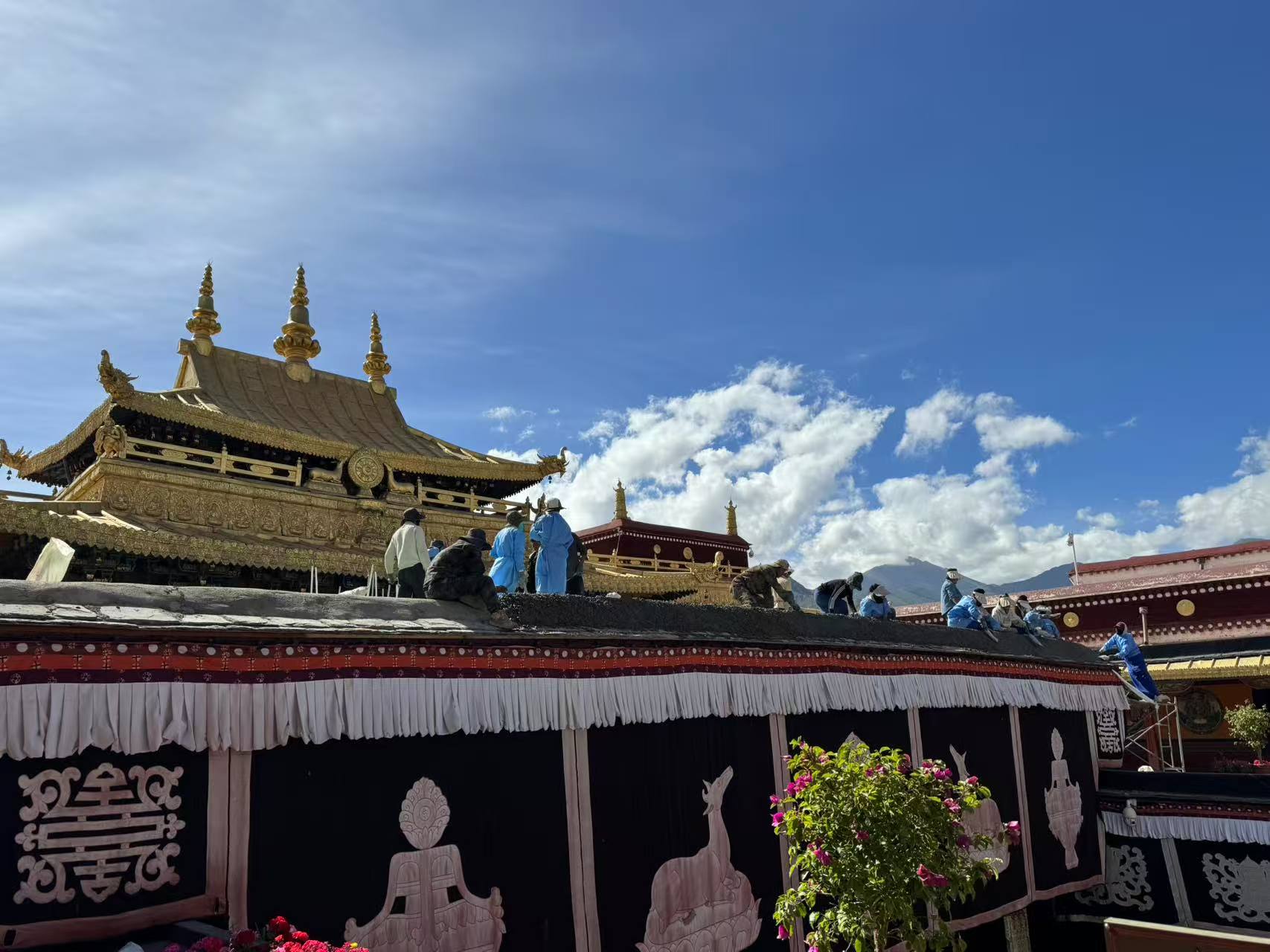
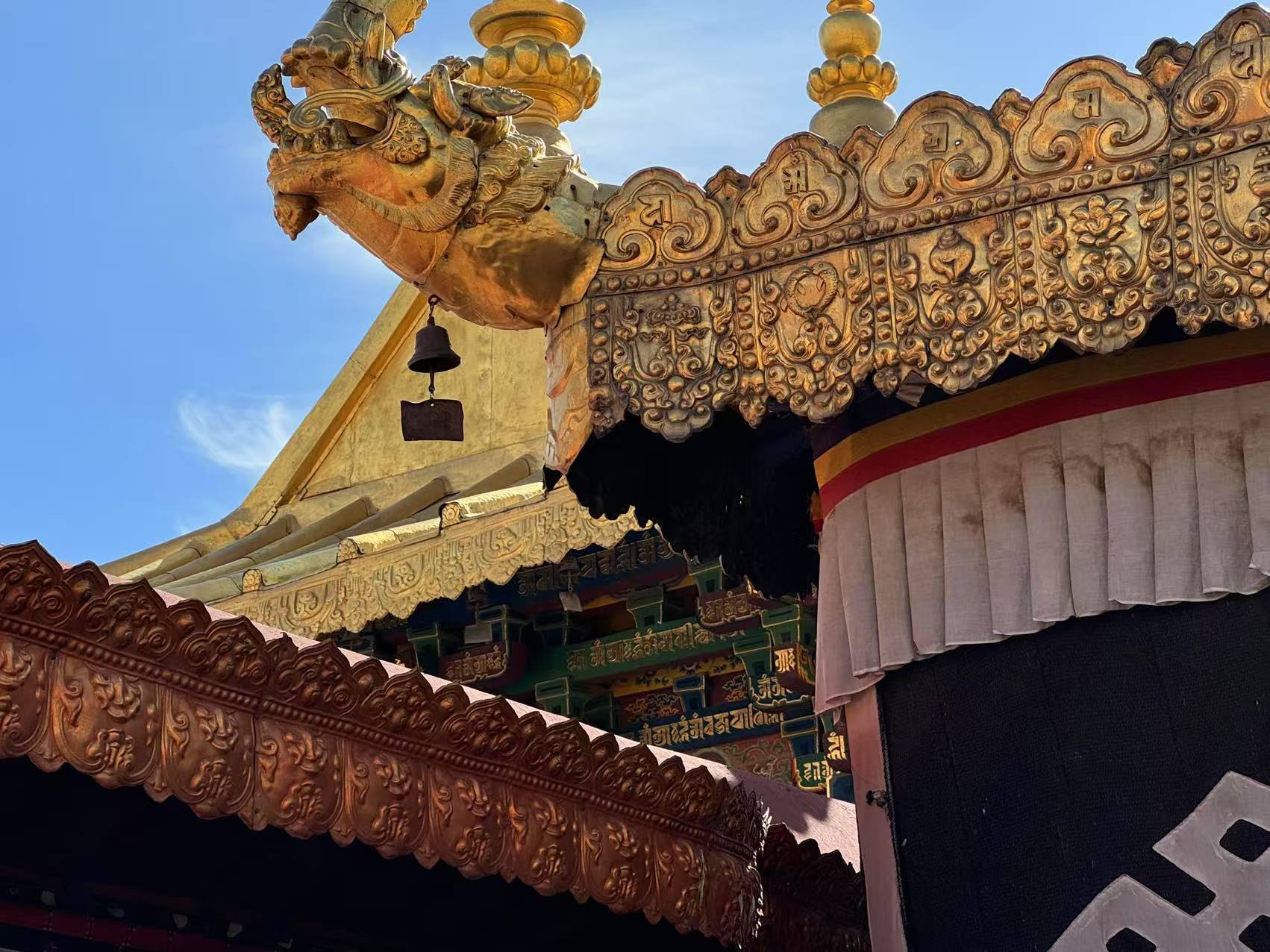
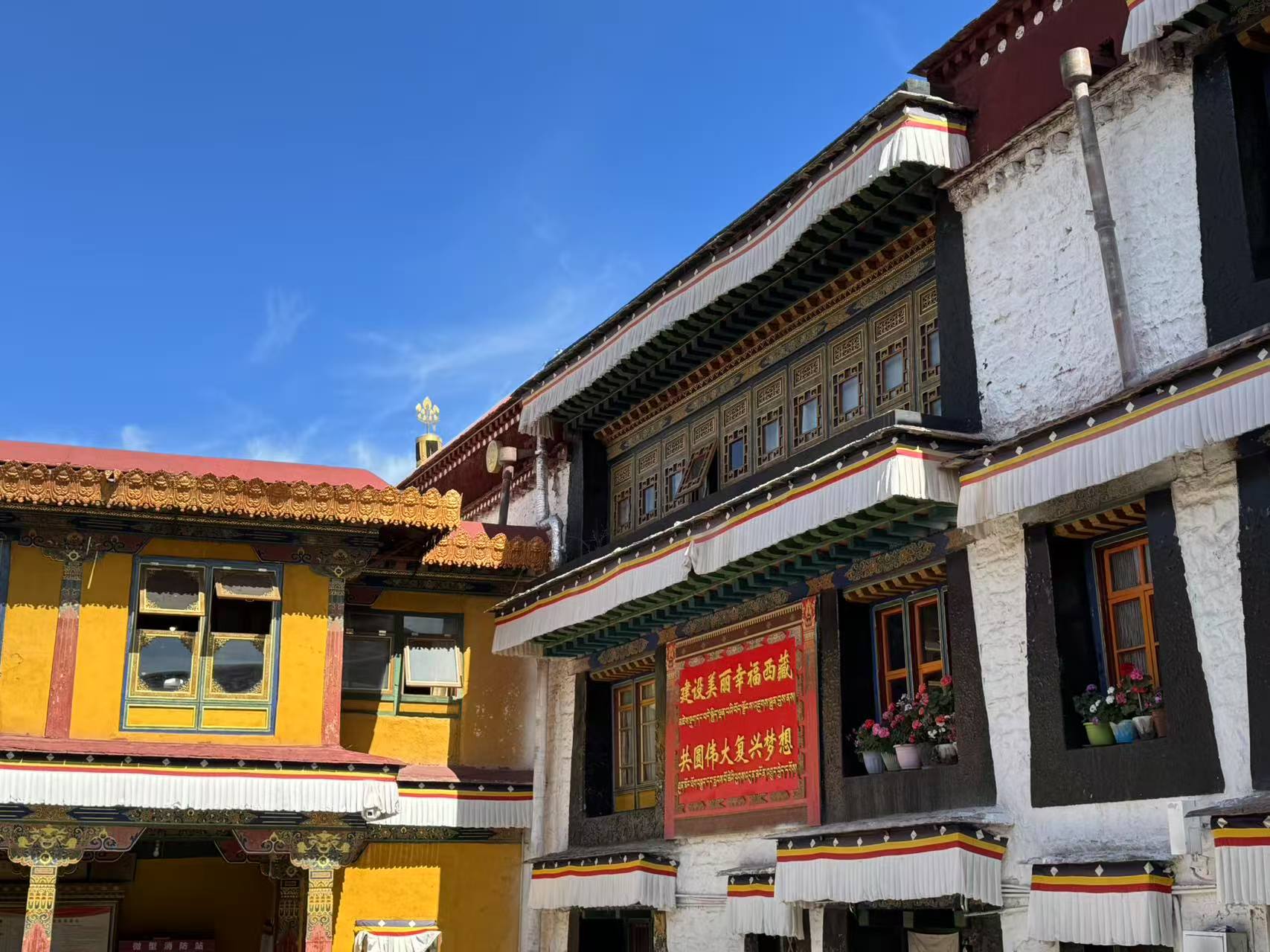
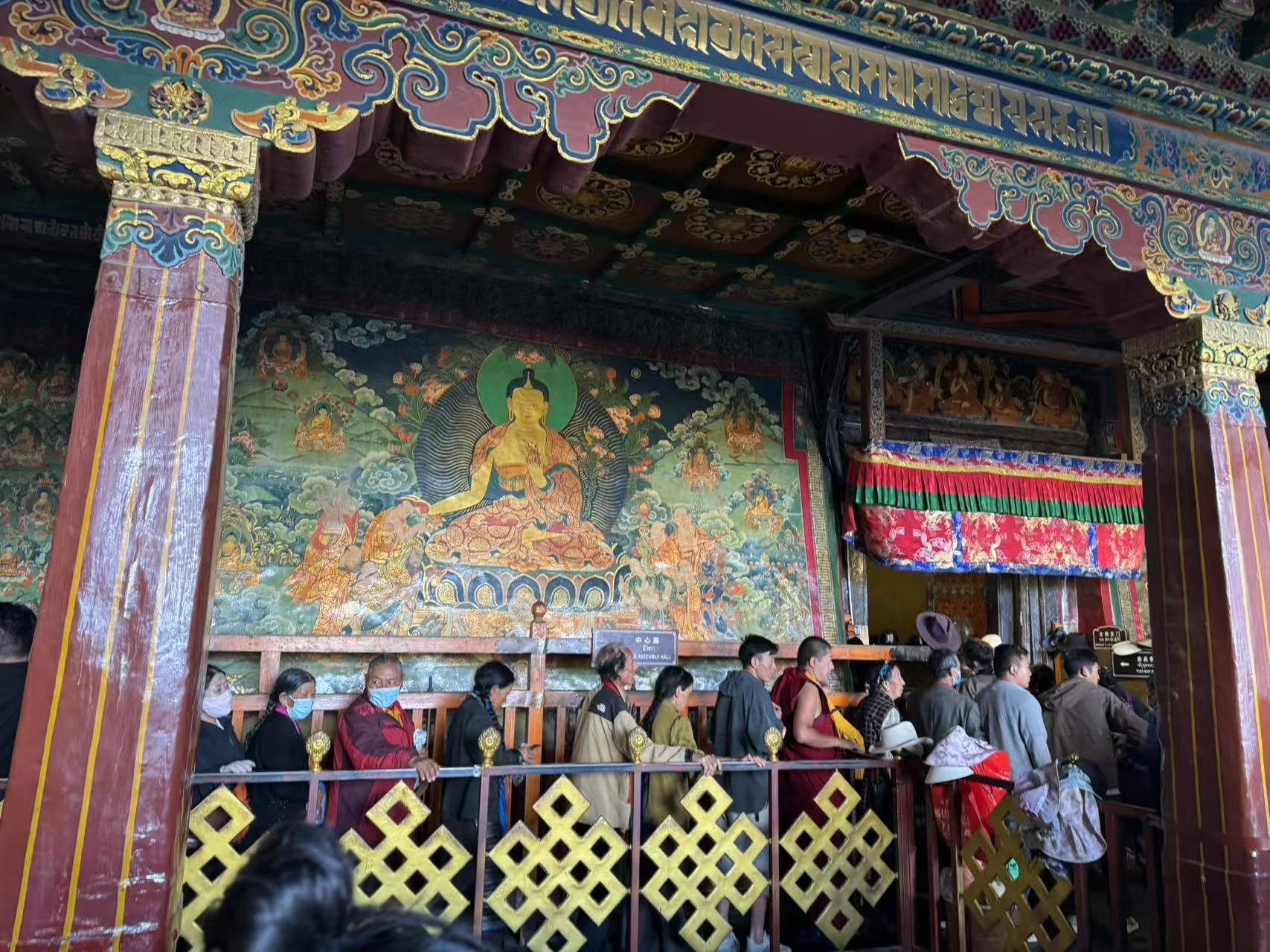

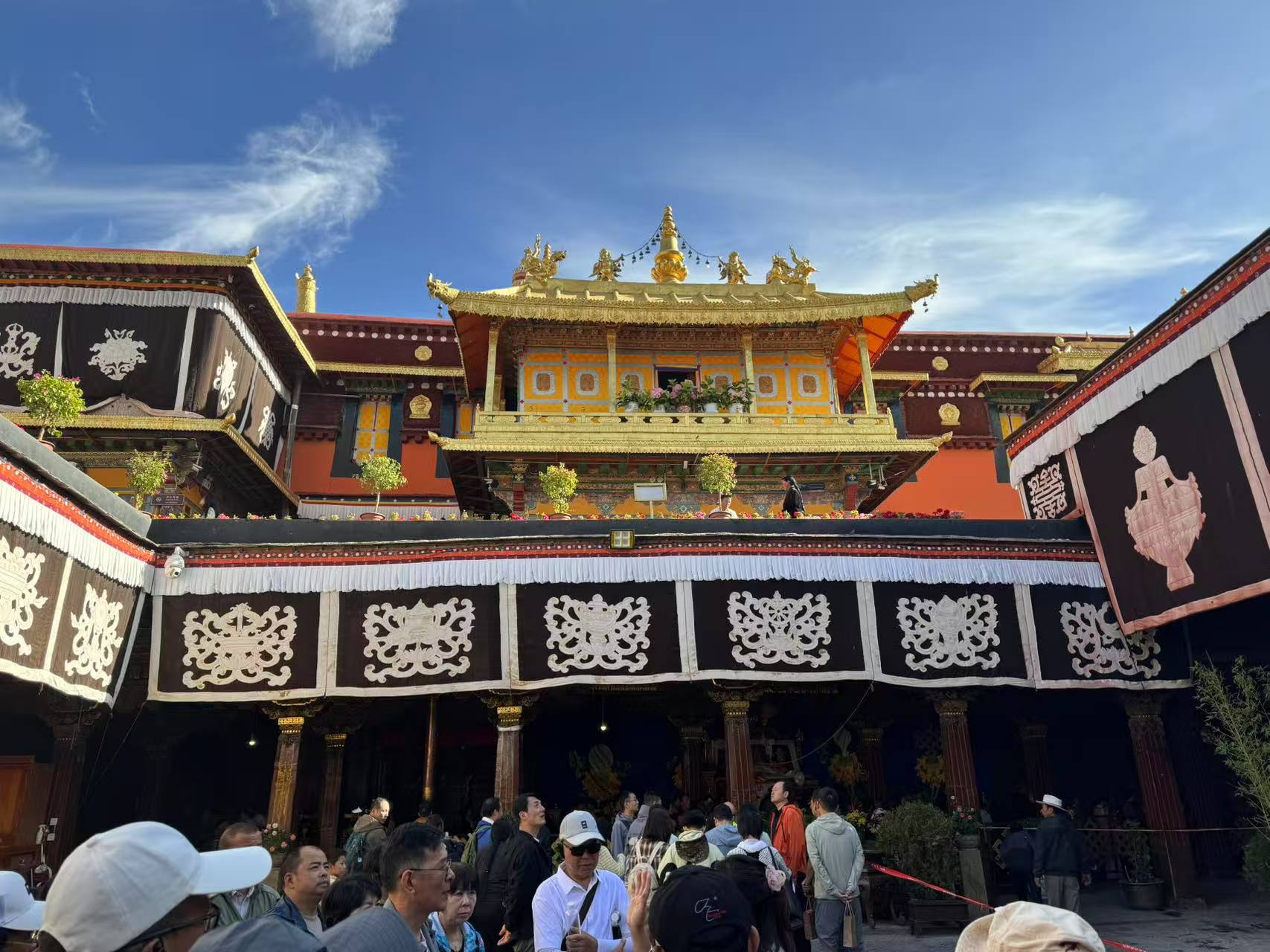
Religious Activities of Jokhang Temple
Pilgrims form the backbone of Jokhang’s religious life. Morning is usually prayers only, if you are able to get a morning ticket, you can witness hundreds of Tibetans travel from across the region to circumambulate the temple – a practice known as “kora.” Some walk, while others prostrate themselves fully on the ground, taking steps only after touching their foreheads to the stone pavement. Inside the temple, pilgrims offer butter lamps (each representing a prayer for wisdom), hang khata on statues, and donate grain or money to support the monks.
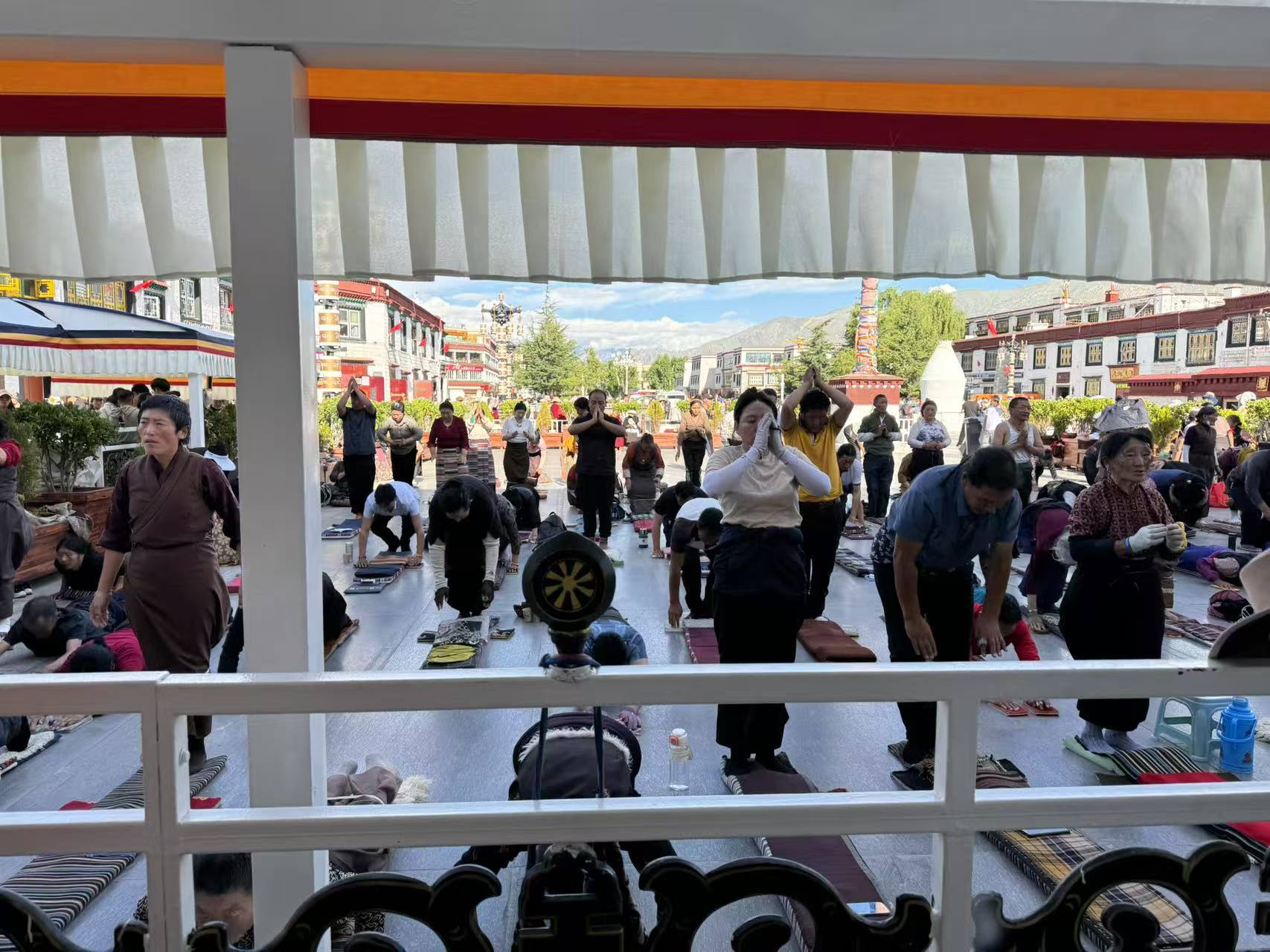
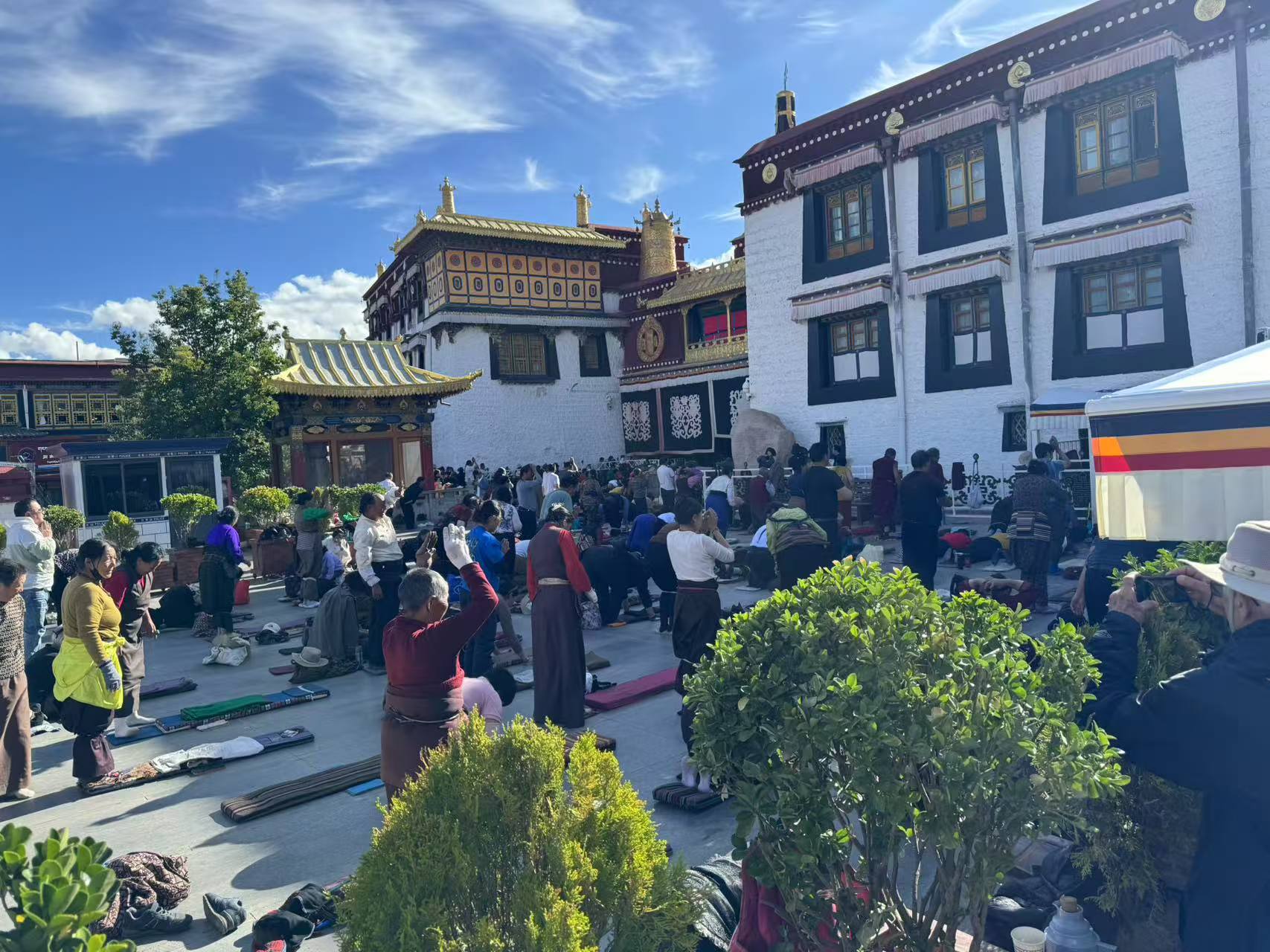
Annual festivals at Jokhang draw even larger crowds. The most important is Losar, the Tibetan New Year, held in February or March. During Losar, monks perform “cham” dances – masked, ritualistic dances that tell stories of good triumphing over evil – in the temple courtyard.
Another key festival is the “Sho Dun Festival” in summer, when a giant thangka of Sakyamuni Buddha is unfurled on the temple’s roof at sunrise. Pilgrims and visitors gather below, tossing barley flour (a symbol of blessing) into the air as the thangka is revealed, creating a sea of white powder and chants of “Om Mani Padme Hum.”
Conclusion
Jokhang Temple is a living archive of Tibet’s religious, cultural, and political history. Its stones hold the memory of Songtsen Gampo’s vision to unify Tibet under Buddhism, of Princess Wencheng’s wisdom, and of centuries of monks and pilgrims who safeguarded its sacred relics.
For visitors, Jokhang Temple is a window into the depths of Tibetan spirituality. YPT’s Tibet Roof of the World tour will equip you with a local professional guide and will take you to every essential monastery of Tibet.
Click here to read more about our China tours.



